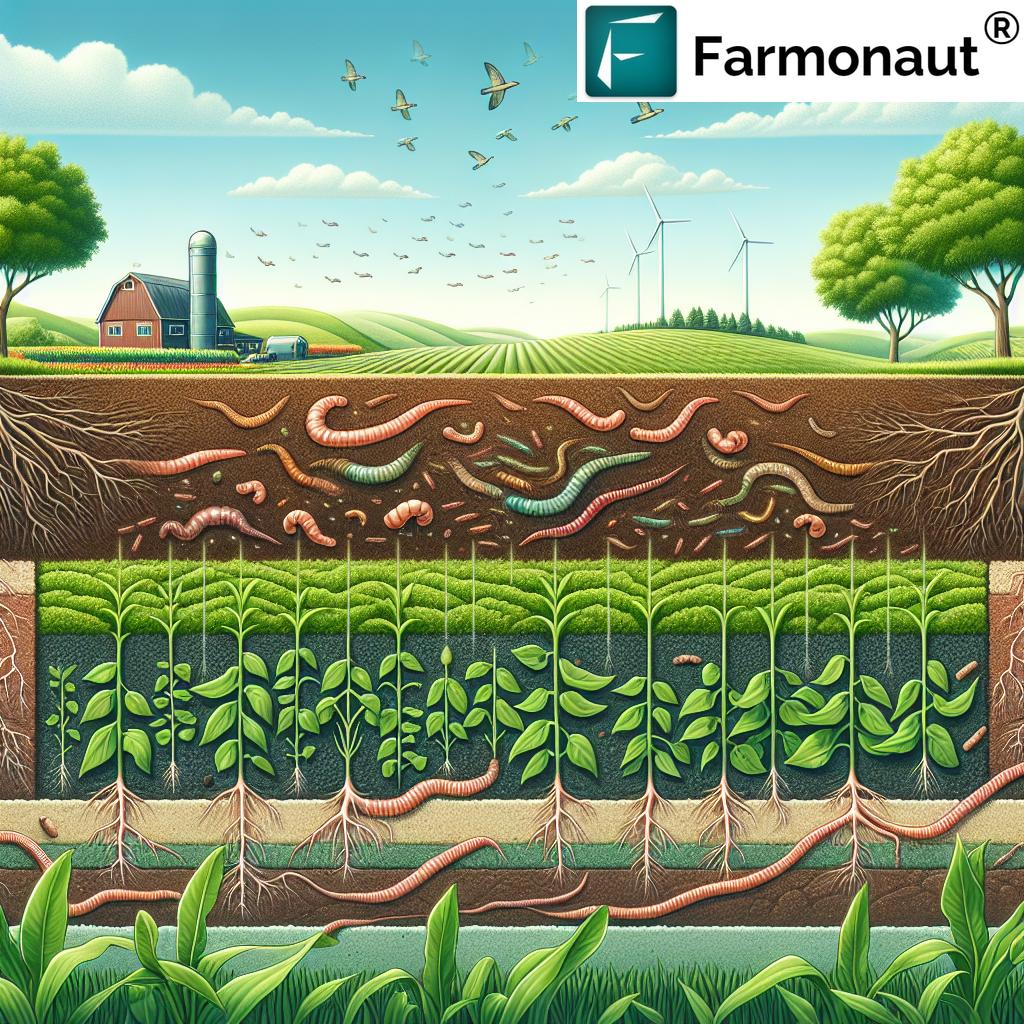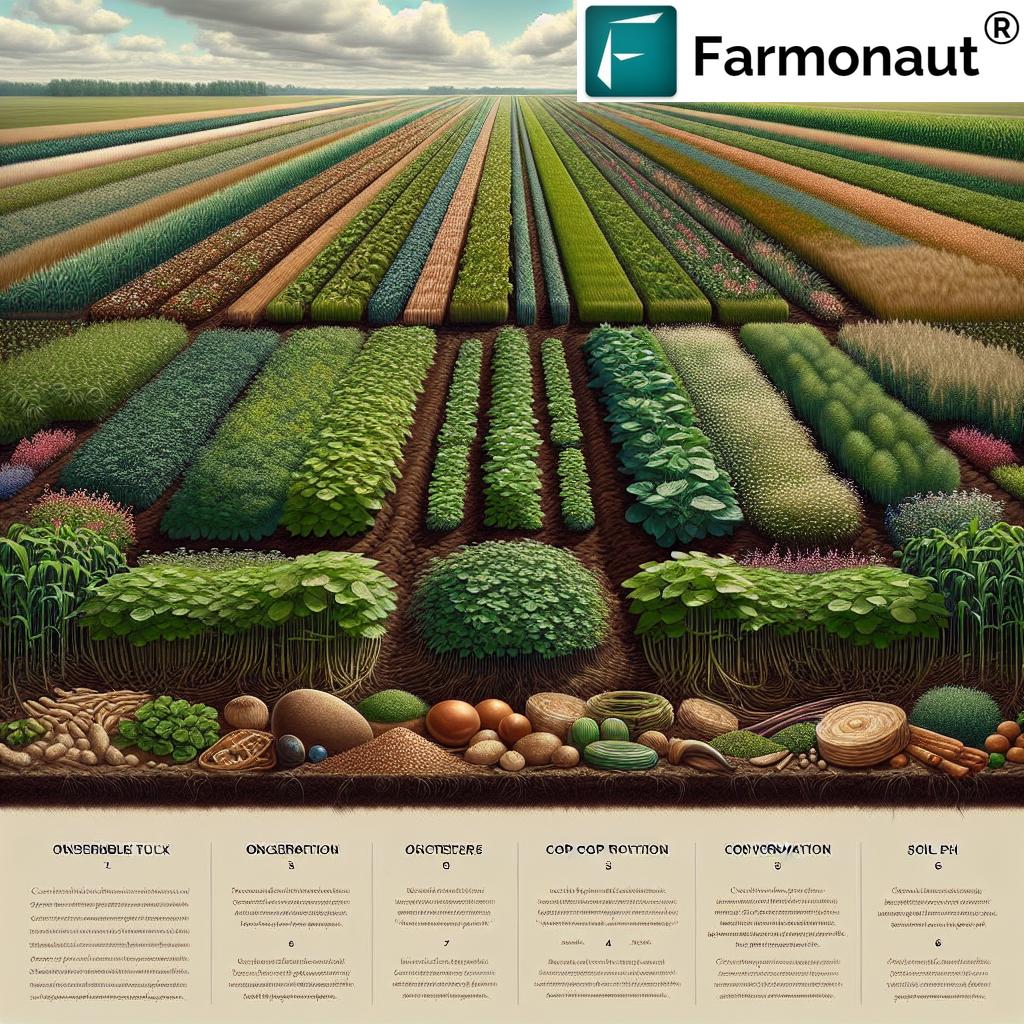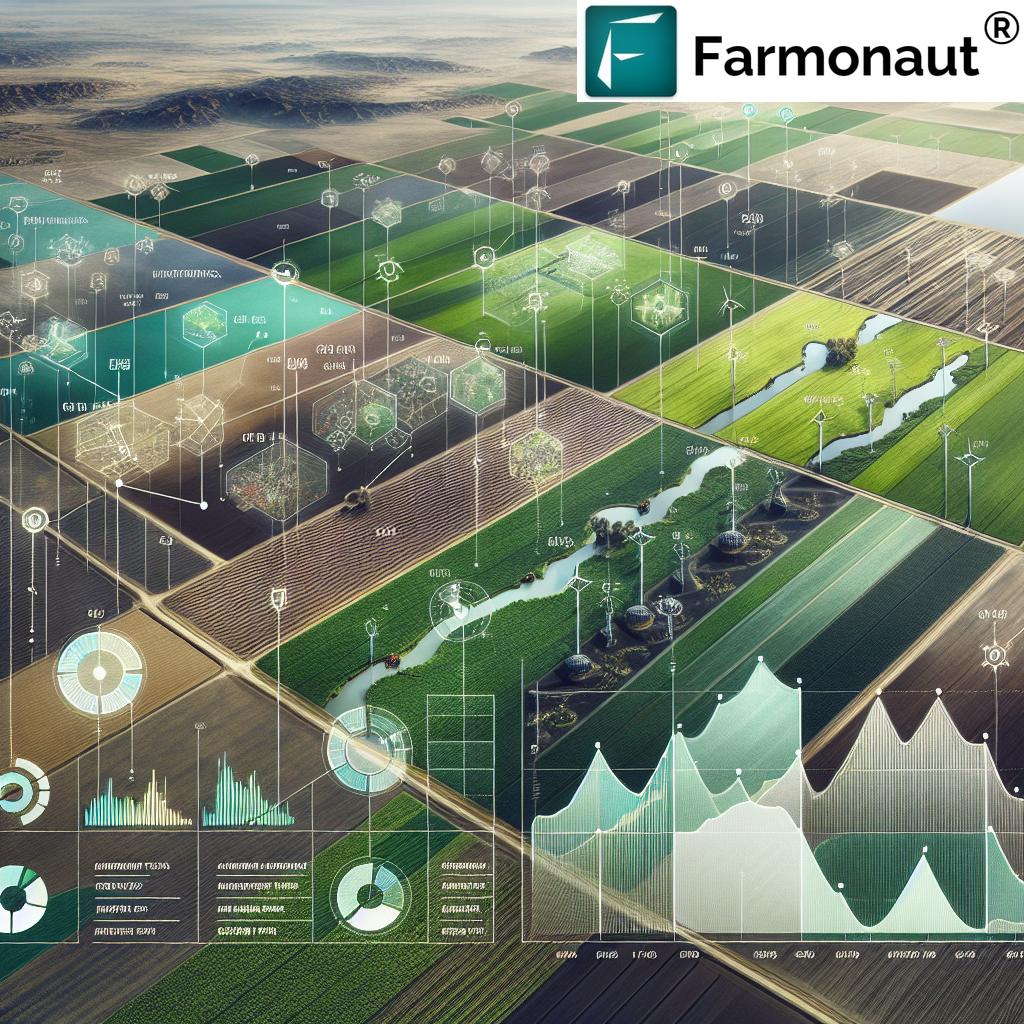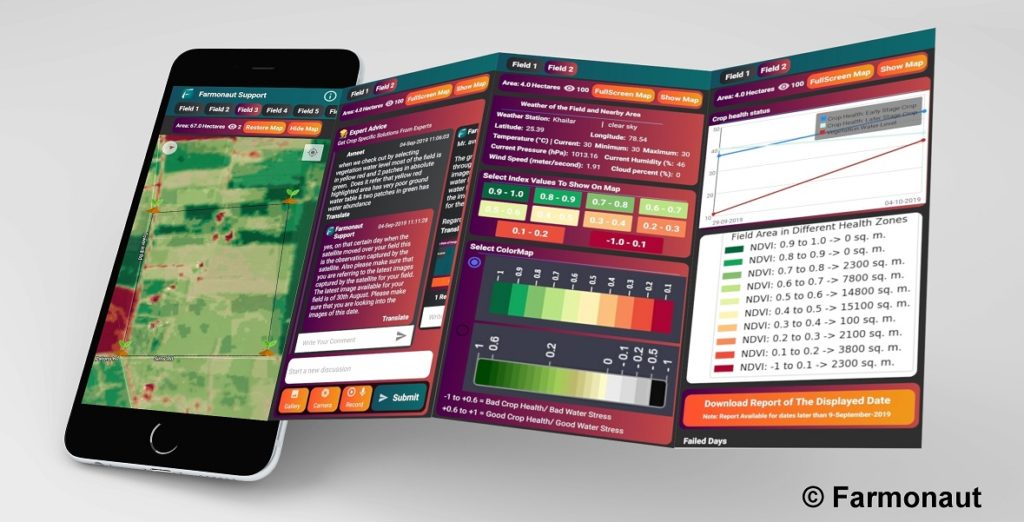Soil Fertility Management: Unlock Massive Yield Gains!
“Cover cropping can increase soil organic matter by up to 20% in just five years, boosting long-term fertility.”
Introduction: Why Soil Fertility Management Matters
Soil fertility management is a cornerstone of modern agriculture, forestry, and sustainable farming practices worldwide. With the ongoing challenges of population growth, climate change, and land degradation, ensuring that our soils remain fertile, productive, and resilient is vital for global food security and environmental sustainability.
We must ask ourselves: how do we maintain, enhance, and restore the natural fertility of our soils? The answer lies in adopting a combination of proven soil management strategies—from organic amendments to intelligent crop rotation and advanced technologies—that improve soil nutrient availability, water retention, and biological activity, while minimizing environmental impact and economic losses.
In this comprehensive guide, we’ll explore the foundational principles of soil fertility management, dig into practical approaches like cover cropping, organic soil amendments, integrated nutrient management, and soil pH management, and reveal how Farmonaut is leading the charge with satellite-based precision agriculture tools designed for farmers, cooperatives, and businesses globally.
Understanding Soil Fertility
Soil fertility is defined as the soil’s capacity to provide essential nutrients in adequate amounts and proper balance for robust plant growth and optimal yield. This ability is not only about the presence of nutrients, but also about physical properties, biological activity, and the interactions between different soil components.
Key Nutrients for Fertile Soils
- Macronutrients: Nitrogen (N), Phosphorus (P), and Potassium (K)—the ‘big three’ for plant nutrition and productivity.
- Secondary Macronutrients: Calcium, Magnesium, Sulfur—important for plant structural integrity and processes like photosynthesis.
- Micronutrients: Iron, Manganese, Zinc, Copper, Boron, Molybdenum—required in smaller amounts, but critical for specific growth functions and enzyme activity.
A fertile soil offers:
- Balanced supply of macro– and micronutrients for plant uptake
- High organic matter content (humus) to improve structure, water retention, and microbial activity
- Good soil structure and texture to support roots and regulate moisture/temperature fluctuations
- A vibrant community of microorganisms and earthworms that contribute to nutrient cycling and soil health
Why Soil Fertility Matters For Us All
Effective soil fertility management not only boosts crop yield and quality, but supports environmental sustainability, reduces reliance on synthetic inputs, and maintains the long-term viability of agricultural systems. Without fertile soils, plants struggle to reach their genetic capacity, food security is threatened, and environmental damage intensifies.
Unlocking Soil Organic Carbon: The Secret to Sustainable Farming with Farmonaut (YouTube)
Key Factors Influencing Soil Fertility
Several factors impact soil fertility, influencing how well soils can provide nutrients for plants. Let’s review these critical elements:
-
Organic Matter Content:
- Serves as a reservoir of nutrients, storing and slowly releasing them via decomposition
- Improves structure and increases water retention in all soil types
- Supports microbial and earthworm activity, promoting nutrient cycling
-
Soil pH (Acidity/Alkalinity):
- pH influences nutrient availability and uptake by plants
- Most crops do best in soils with pH 6.0–7.5 (slightly acidic to neutral)
-
Physical Properties (Texture & Structure):
- Proportion of sand, silt, and clay controls retention of water and nutrients
- Well-structured soils (crumb structure) allow easy root growth and nutrient uptake
-
Biological Activity:
- Soil microorganisms and fauna (like earthworms) break down organic amendments and recycle nutrients for plant use
- High biological activity signals good soil health and productive agricultural systems
-
Environmental and Management Factors:
- Rainfall, temperature, crop type, and previous management practices all influence fertility
- Practices like tillage, residue management, and crop rotation directly affect soil condition and nutrient cycling
To unlock the full productivity of our soils, we must tailor our management approaches based on these fundamental factors and regularly perform soil testing to monitor changes and address limiting constraints.
Soil Fertility Management Strategies
Let’s explore the most effective soil fertility management methods used in agriculture and forestry for boosting soil health and crop yields. Employing a suite of integrated strategies is the key for maximizing yields, building healthy soils, and ensuring long-term sustainability.
“Organic amendments like compost can raise crop yields by 15-30% through improved soil nutrient availability.”
1. Organic Amendments (Compost, Manure, Green Manures)
Applying organic soil amendments such as well-composted manure, crop residues, or specifically grown green manures is a time-tested way to improve soil fertility and structure. Organic amendments:
- Supply both macro- and micronutrients for plant growth in balanced forms
- Increase organic matter content, which improves structure, moisture retention, microbial activity
- Enhance the soil’s capacity to retain nutrients and water, reducing leaching risk
- Support microorganisms and earthworms that further break down organic residues, ensuring nutrient cycling
Manure and compost can be worked into the soil or used as mulch. Green manures—cover crops like clover or vetch plowed under before flowering—add fresh organic matter and, if leguminous, fix nitrogen from the air to further boost fertility.
Tip: Always avoid excessive application rates. Too much manure can cause nutrient imbalances and pollution of water resources.
2. Cover Cropping: Benefits & Application
Cover cropping benefits are numerous and extend well beyond the growing season. By planting cover crops—such as oats, rye, radish, or legumes—during fallow periods, we:
- Protect soils from erosion by maintaining year-round ground cover
- Suppress weeds by outcompeting them for sunlight, nutrients, and water
- Increase organic matter and stimulate microbial activity once worked into the soil
- Legume cover crops (e.g., vetch, clover) perform biological nitrogen fixation, reducing need for synthetic fertilizers
Integrating cover cropping into our rotation is especially useful for regenerating tired soils, improving structure, increasing biodiversity, and supporting sustainable, resilient farming systems.
3. Crop Rotation for Soil Health
Crop rotation for soil health means alternating plant families and functions each growing season—such as cereals, legumes, and root vegetables—to:
- Break cycles of pests, diseases, and weeds
- Maintain balance of nutrients—the same crop year after year exhausts specific nutrients and increases disease pressure
- Enhance organic matter and stimulate diverse microbial communities
- Leguminous crops (peas, beans, lentils) supplement soil nitrogen through symbiosis with bacteria in their root nodules
Crop rotation is a foundation of long-term soil fertility management—especially in sustainable farming practices.
4. Conservation Tillage Methods
Conservation tillage methods reduce or eliminate soil disturbance during planting and cultivation. Techniques like no-till, strip-till, or mulch-till:
- Preserve soil structure and organic matter content
- Minimize erosion and loss of fertility
- Encourage earthworm and microorganism activity
- Improve water infiltration and retention
A key benefit of no-till farming is that it keeps soil organic matter stable over time, making it ideal for chronic drought, sloping lands, or areas suffering from wind/water erosion.
Farmonaut | Making Farming Better With Satellite Data (YouTube)
5. Integrated Nutrient Management (INM)
Integrated nutrient management (INM) combines organic and inorganic fertilizers in precise proportions according to soil testing results. This method:
- Optimizes nutrient supply to target crop needs and growth stages
- Reduces risks of nutrient imbalances, leaching, and environmental pollution
- Enhances soil health by maintaining organic matter and stimulating microbial activity
- Encourages regular soil testing for data-driven fertilizer application
If you manage commercial or large-scale operations, Farmonaut Large Scale Farm Management enables seamless monitoring across hectares, ensuring accurate and timely nutrient application through advanced data analytics.
6. Soil pH Management
Proper soil pH management is crucial because pH directly affects nutrient availability for plants. Here’s how:
- Acidic soils (low pH) may lock up phosphorus and certain micronutrients, stunting plant growth
- Applying lime raises pH, increasing nutrient uptake
- Alkaline soils (high pH) can make iron, zinc, and manganese less available—using elemental sulfur helps to lower pH
Regular soil testing is essential for detecting and correcting pH imbalances, optimizing inputs, and safeguarding the long-term health of our soils.
7. Agroforestry: Integrating Trees into Agricultural Systems
By integrating trees and shrubs with traditional crops and livestock, we reap multiple soil fertility benefits:
- Tree roots extract water and nutrients from deeper layers, cycling them to the surface via leaf litter
- Canopy and root systems reduce soil erosion and buffer against climatic extremes
- Increases on-farm biodiversity, improves microbial activity, and strengthens ecosystem resilience
Agroforestry systems are especially valuable for sustainable soil management in marginal areas or high slope zones, combining short-term crops with long-term sustainability.
The Role of Artificial Intelligence in Agriculture – Farmonaut (YouTube)
8. Mulching
Mulching involves applying materials (straw, leaves, wood chips, or even plastic film) on the soil surface, which:
- Conserves moisture by reducing evaporation
- Suppresses weed growth by blocking sunlight
- Gradually adds organic matter as mulch decomposes, increasing nutrient levels and enhancing microbial communities
- Stabilizes temperature swings at the soil surface, protecting seedling roots and microorganisms
Mulching is easy to implement and highly effective for improving soil health and boosting crop yields—especially in organic and smallholder systems.
9. Vermicomposting
Vermicomposting leverages the power of earthworms to decompose organic wastes (like food scraps, crop residue, and manure) into vermicompost:
- Vermicompost is rich in nutrients, enzymes, and plant growth hormones
- Enhances soil structure and boosts microbial activity
- Slow nutrient release means long-lasting effects for improved soil fertility
This approach is ideal for resource recycling, reducing waste, and achieving circular, low-input sustainability in farming.
10. Soil Erosion Control
Preserving the topsoil layer through effective erosion control methods ensures a lasting foundation for plant growth and productivity.
- Use contour farming, terracing, grass strips, and permanent ground cover to prevent soil loss from wind and water
- Keeping soil covered year-round—either with crops, mulch, or natural vegetation—protects soil structure and nutrient content
Uncontrolled erosion removes the most fertile soil layers, diminishing soil capacity and crop yield over time.
Farmonaut Covered By Radix AI: Leveraging Remote Sensing and ML for a Greener Future (YouTube)
Smart Fertility & Farm Management With Farmonaut
-
Monitor and Minimize Your Farm’s Carbon Footprint
Farmonaut’s solution enables precise tracking of your farm’s carbon emissions, helping align your management with global sustainability goals while boosting yield. -
Blockchain-Based Crop Traceability
Enhance your food safety and branding with end-to-end blockchain-based product traceability, guaranteeing transparency and trust from field to market. -
Fleet & Resource Management Tools
Farmonaut helps manage your vehicles, optimize machinery use, and cut costs—ideal for large operations. -
Crop Loan and Insurance Service
Satellite-derived farm verification makes loan and insurance approval faster and more reliable, improving your financial access and reducing the risk for providers. -
Access Farmonaut’s Satellite & Weather Data API
for app or system integration, or find details in the Developer Docs. -
Farmonaut Crop, Plantation & Forest Advisory App
Receive tailored insights via satellite, AI-based recommendations, and best-practice advisories—aligned with soil fertility best practices!
The Role of Farmonaut in Soil Fertility Management
As soil management grows increasingly complex, data-driven decision-making becomes crucial for sustainable success. Farmonaut stands at the forefront of this transformation by making advanced precision agriculture tools affordable and accessible to all sizes of farms, cooperatives, and institutions.
- Real-Time Soil & Crop Health Monitoring: Use satellite imagery and AI to identify nutrient deficiencies, soil moisture issues, and potential disease or erosion risks—right from your phone or computer.
- Custom Farm Advisory: The Jeevn AI system analyzes your unique soil, crop, and climate data to generate site-specific recommendations around fertility management, soil amendments, water use, and more.
- Sustainability Built In: Carbon tracking, traceability, and resource monitoring help farmers meet sustainability standards and tap into premium markets.
- Scalability: Whether you manage one field or thousands of hectares, Farmonaut’s platform—available as a web/mobile app or API—supports all your soil and resource management needs.
Getting started is simple:
download the Farmonaut App,
sign up, and unlock the power of precision soil fertility management at any scale.
Comparison Table of Soil Fertility Management Strategies and Their Estimated Yield Improvements
| Management Strategy | Estimated Yield Improvement (%) | Nutrient Availability Boost | Environmental Benefit | Sustainability Score (1-5) |
|---|---|---|---|---|
| Organic Amendments (Compost, Manure) | 15–30% | High (Slow-release, multi-nutrient) | High: Increases biodiversity, improves soil structure | 5 |
| Cover Cropping | 10–25% | Moderate–High (N-fixation, surface protection) | High: Reduces erosion, boosts organic matter | 5 |
| Crop Rotation | 8–20% | Moderate (Balances nutrient demand, breaks cycles) | High: Reduces pest/disease, preserves nutrients | 5 |
| Conservation Tillage | 5–15% | Variable (Protects structure, increases OM over time) | Moderate–High: Reduces erosion, saves labor | 4 |
| Integrated Nutrient Management (INM) | 12–28% | High (Optimizes availability, minimizes waste) | High: Precision efficiency, less pollution | 5 |
| Synthetic Fertilizers Alone | 10–20% | High (Immediate availability) | Low–Moderate: Possible runoff & degradation | 2 |
| Soil pH Management | Up to 18% | Moderate (Corrects imbalances for optimal uptake) | Moderate: Reduces nutrient lock-up | 4 |
| Agroforestry Practices | 8–18% | Moderate (Leaf litter, deep nutrient cycling) | High: Increases biodiversity, reduces erosion | 5 |
This table highlights that combining organic amendments, cover cropping, crop rotation, conservation tillage, INM, and pH management produces the highest yield, environmental, and sustainability returns.
Challenges in Soil Fertility Management
While the benefits of robust soil fertility management are clear, numerous challenges can make adoption and effectiveness difficult—especially for resource-constrained farmers and institutions.
- Soil Degradation: Overuse of chemical fertilizers, excessive tillage, monocropping, deforestation, and poor irrigation practices can erode soil structure, deplete organic matter, and lead to nutrient imbalances.
- Climate Change Impacts: Increased weather variability alters water availability, exacerbates erosion risks, and disrupts microbial activity, making consistent soil fertility harder to achieve.
- Economic Barriers: Smallholders may lack capital to purchase (manure, lime, quality seed), as well as access to regular soil testing or technology-based solutions.
- Knowledge Gaps: Limited information and training on sustainable practices and new technologies may restrict adoption.
To overcome these, we need policy support, farmer training, affordable agricultural inputs, and access to advanced solutions (like Farmonaut) that make precision soil fertility management practical and scalable for everyone.
Frequently Asked Questions (FAQ) on Soil Fertility Management
What are the primary nutrients needed for fertile soil?
Nitrogen (N), phosphorus (P), and potassium (K) are macronutrients essential for plant growth, in addition to secondary nutrients (calcium, magnesium, sulfur) and micronutrients (iron, manganese, zinc, etc.).
How does organic matter improve soil fertility?
Organic matter (like compost or green manures) increases soil’s water retention, stabilizes structure, feeds microorganisms, and acts as a slow-release source of crops’ vital nutrients.
How does soil pH affect nutrient availability?
Different nutrients are more or less available depending on the pH of the soil. Most crops prefer a pH range of 6.0 to 7.5, where nutrients are most accessible; extreme acidity or alkalinity can lock up nutrients and stunt growth.
What’s the value of integrating organic and inorganic fertilizers?
Combining both maximizes nutrient supply, reduces risk of nutrient leaching, ensures sustained soil health, and minimizes negative environmental impacts.
How can Farmonaut help improve soil fertility management?
Farmonaut delivers actionable insights, real-time monitoring, and AI-driven advisory for targeted amendments, irrigation, and resource use—resulting in increased yields, lower costs, and enhanced sustainability.
How often should soil testing be done?
We recommend regular soil testing (every 2-3 years for stable systems, yearly for problem areas or after major changes) to monitor pH, nutrient status, and overall health.
Conclusion: Towards Sustainable Soil Fertility Management
In summary, soil fertility management is not a single action but a dynamic, holistic approach involving a range of practices tailored to each field, farm, or landscape. By embracing:
- Organic amendments and vermicomposting
- Cover cropping benefits and crop rotation for soil health
- Conservation tillage methods and robust erosion control
- Integrated nutrient management and pH management
- Technology-driven monitoring and advisory systems like Farmonaut
we secure higher yields, healthier soils, and lasting sustainability for our farms, communities, and the planet.
Let’s empower ourselves and our peers with knowledge, regularly test and observe our soils, and apply these strategies for remarkable yield gains and stewardship of our most precious agricultural resource—fertile soil.
Farmonaut Subscriptions
Unlock advanced satellite crop monitoring, AI-powered advisory, blockchain-based traceability, and more at affordable rates. Choose your subscription to transform your soil fertility management today.

















